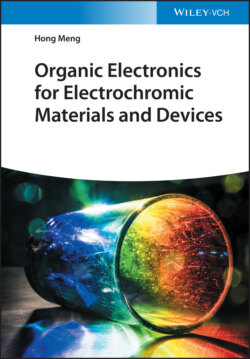Читать книгу Organic Electronics for Electrochromic Materials and Devices - Hong Meng - Страница 19
1.4 Conclusion
ОглавлениеIn this chapter, a broad overview of electrochromism, EC materials, device structure, development history, and key parameters of electrochromism have been introduced briefly. More detailed descriptions of each area will be discussed in Chapters 2–15. In summary, research in EC technologies has achieved significant breakthroughs over the decades. Many generations of EC materials have been developed, ranging from traditional metal oxides to more recent organic polymers, small molecules, and hybrid materials. Moreover, benefit from the ECD design and structural optimization, flexible substrate‐based devices were fabricated with the low‐price roll‐to‐roll process, which makes the EC technology have large scope applications, such as smart windows for reducing building energy consumption, self‐powered EC window using organic photovoltaic cells as power supplement, car rear‐view mirrors for greater safety, and smart sunglasses for better UV‐radiation protection. Many of these technologies and applications have been commercialized and are available on the market. With the concerted efforts of researchers and engineers, we believe that the new EC materials and advanced technologies will constantly develop and more advanced ECD with low manufacturing cost will be exploited to realize practical applications.
